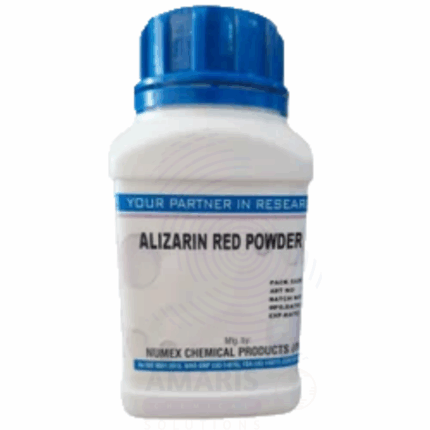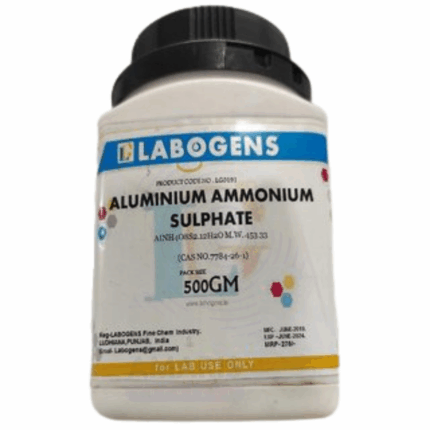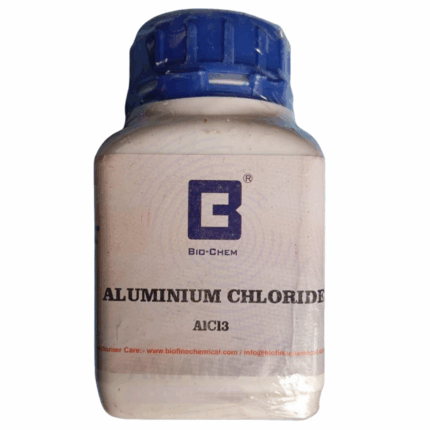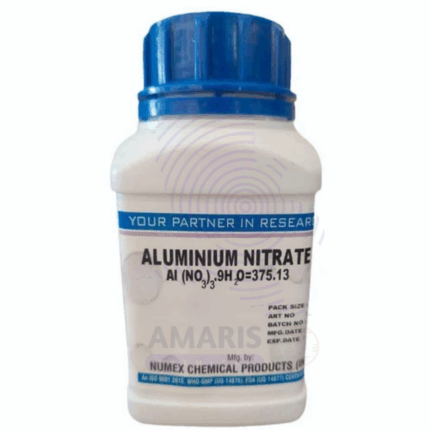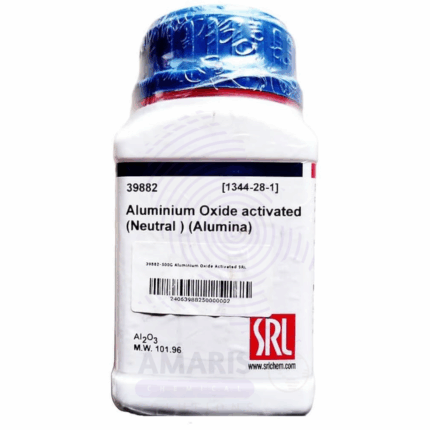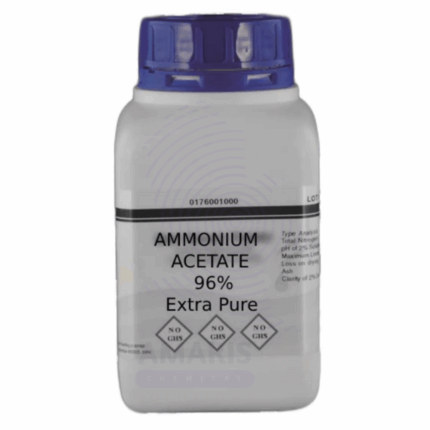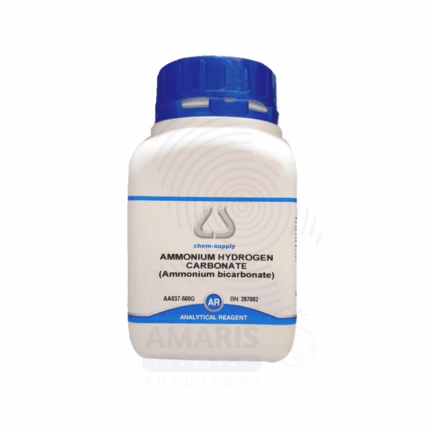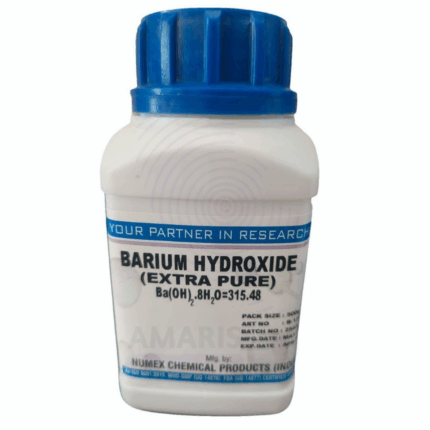
Sodium Hydroxide Pellets Extra Pure
$ 18.22
Sodium Hydroxide Pellets Extra Pure is a white, solid pelletized form of sodium hydroxide known for its strong alkalinity and high purity. Widely used in laboratories and industries, it serves as a powerful base for pH adjustment, neutralization, and chemical synthesis. Its Extra Pure grade ensures minimal impurities for analytical, pharmaceutical, and food industry applications. It is a critical reagent in water treatment, chemical manufacturing, and personal care products. Due to its corrosive nature, it must be handled with appropriate protective equipment and stored in sealed, moisture-free containers.
Sodium Hydroxide Pellets Extra Pure
PRIMARY USES
- Analytical Reagent & Laboratory Applications:
Used as a strong base for pH adjustment, neutralization, and titrations
• Essential reagent in synthesis of organic and inorganic compounds
• Used in buffer preparation and as a cleaning agent for laboratory glassware - Chemical Manufacturing:
Key ingredient in the production of soaps, detergents, paper, and textiles
• Utilized in the manufacture of sodium salts and various industrial chemicals - Water Treatment:
Used for neutralizing acidic water and adjusting pH levels in water treatment plants
• Facilitates coagulation and flocculation processes in water purification - Pharmaceutical & Cosmetic Industry:
Employed as a pH adjuster and neutralizing agent in pharmaceutical formulations
• Used in the manufacture of soaps, creams, and personal care products - Food Industry:
Acts as a food additive for pH control and peeling of fruits and vegetables (E524)
• Used in the processing of certain food products such as olives and pretzels
SECONDARY USES
- Textile & Dyeing Industry:
Applied in fabric scouring, bleaching, and dye fixing processes
• Enhances color brightness and fastness of dyed fabrics - Soap & Detergent Industry:
Major raw material in the production of solid and liquid soaps and detergents
1. Basic Identification Attributes
- Chemical Name: Sodium Hydroxide Pellets
• CAS Number: 1310-73-2
• HS Code: 2815.11.00
• Molecular Formula: NaOH
• Synonyms:
- Caustic soda
- Lye
- Sodium hydrate
2. Physical & Chemical Properties
Physical State: Solid, pellet-shaped or granular form
• Color & Odor: White, odorless
• Melting Point: 318 °C
• Density: Approximately 2.13 g/cm³
• Solubility:
- Highly soluble in water with exothermic dissolution
- Insoluble in organic solvents
• pH Level: Strongly alkaline (pH >13 for 1% solution)
• Vapor Pressure: Negligible
• Flash Point: Not flammable
3. Safety & Hazard Attributes
Hazard Class (GHS Classification):
- Corrosive to skin and eyes (Category 1)
- Causes severe burns
• NFPA Ratings: - Health: 3
- Flammability: 0
- Reactivity: 1
• Exposure Limits: - OSHA PEL: 2 mg/m³ (ceiling)
- ACGIH TLV: 2 mg/m³ (ceiling)
• Reactivity: - Reacts violently with acids and water releasing heat
- Strongly corrosive to metals and organic materials
4. Storage & Handling Attributes
Storage Conditions:
- Store in a cool, dry, well-ventilated area away from acids and moisture
- Keep container tightly sealed
• Incompatible Materials: - Acids
- Organic materials
- Metals such as aluminum and zinc
• Container Type: - Plastic or corrosion-resistant metal drums
• Shelf Life: - Stable if kept dry and sealed
• Special Handling Requirements: - Use chemical-resistant gloves, goggles, and protective clothing
- Avoid contact with skin, eyes, and inhalation of dust
5. Regulatory & Compliance Attributes
Regulatory Status:
- Listed under REACH, OSHA, EPA, and other chemical inventories
• Transportation Restrictions: - Classified as corrosive material; handle as per regulations
• Waste Disposal Method: - Dispose according to local environmental and hazardous waste regulations
6. Environmental & Health Impact
Ecotoxicity:
- Highly alkaline, can cause environmental damage if released in large quantities
• Persistence in Environment: - Reacts rapidly with acids and organic matter, neutralizing in environment
• Carcinogenicity/Mutagenicity: - Not classified as carcinogenic or mutagenic
• Biodegradability: - Inorganic and does not biodegrade but neutralizes in environment
SAFETY PRECAUTIONS
Personal Protective Equipment (PPE):
• Wear chemical-resistant gloves (e.g., nitrile, neoprene)
• Use safety goggles or full face shield
• Wear protective clothing and boots
• Use dust mask or respirator if dust exposure possible
Handling:
• Handle in a well-ventilated area
• Avoid contact with skin, eyes, and clothing
• Do not breathe dust
• Wash hands thoroughly after handling
Storage:
• Store in tightly sealed containers
• Keep away from acids, moisture, and incompatible materials
FIRST AID MEASURES
Inhalation:
• Move to fresh air immediately
• Seek medical attention if breathing difficulties occur
Skin Contact:
• Rinse skin immediately with plenty of water for at least 15 minutes
• Remove contaminated clothing
• Seek immediate medical attention for burns
Eye Contact:
• Rinse eyes immediately with plenty of water for at least 15 minutes
• Seek emergency medical care immediately
Ingestion:
• Do not induce vomiting
• Rinse mouth with water
• Seek immediate medical attention
FIRE FIGHTING MEASURES
Flammability:
• Non-flammable solid
Extinguishing Media:
• Use water spray, foam, or dry chemical extinguishers suitable for surrounding fire
Hazardous Combustion Products:
• May release toxic fumes of sodium oxides when heated
Firefighter Protection:
• Wear self-contained breathing apparatus and full protective gear


 Preservatives(food)
Preservatives(food) Flavor Enhancers
Flavor Enhancers Acidulants
Acidulants Sweeteners
Sweeteners Antioxidants
Antioxidants Colorants(food)
Colorants(food) Nutraceutical Ingredients (food)
Nutraceutical Ingredients (food) Nutrient Supplements
Nutrient Supplements Emulsifiers
Emulsifiers
 Collectors
Collectors Dust Suppressants
Dust Suppressants Explosives and Blasting Agents
Explosives and Blasting Agents Flocculants and Coagulants
Flocculants and Coagulants Frothers
Frothers Leaching Agents
Leaching Agents pH Modifiers
pH Modifiers Precious Metal Extraction Agents
Precious Metal Extraction Agents
 Antioxidants(plastic)
Antioxidants(plastic) Colorants (Pigments, Dyes)
Colorants (Pigments, Dyes) Fillers and Reinforcements
Fillers and Reinforcements Flame Retardants
Flame Retardants Monomers
Monomers Plasticizers
Plasticizers Polymerization Initiators
Polymerization Initiators Stabilizers (UV, Heat)
Stabilizers (UV, Heat)
 Antifoaming Agents
Antifoaming Agents Chelating Agents
Chelating Agents Coagulants and Flocculants
Coagulants and Flocculants Corrosion Inhibitors
Corrosion Inhibitors Disinfectants and Biocides
Disinfectants and Biocides Oxidizing Agents
Oxidizing Agents pH Adjusters
pH Adjusters Scale Inhibitors( water)
Scale Inhibitors( water)
 Antioxidants(cosmetic)
Antioxidants(cosmetic) Emollients
Emollients Fragrances and Essential Oils
Fragrances and Essential Oils Humectants
Humectants Preservatives
Preservatives Surfactants(cosmetic)
Surfactants(cosmetic) Thickeners
Thickeners UV Filters
UV Filters
 Fertilizers
Fertilizers Soil Conditioners
Soil Conditioners Plant Growth Regulators
Plant Growth Regulators Animal Feed Additives
Animal Feed Additives Biostimulants
Biostimulants Pesticides (Herbicides, Insecticides, Fungicides)
Pesticides (Herbicides, Insecticides, Fungicides)
 Active Pharmaceutical Ingredients (APIs)
Active Pharmaceutical Ingredients (APIs) Excipients
Excipients Solvents(pharmaceutical)
Solvents(pharmaceutical) Antibiotics
Antibiotics Antiseptics and Disinfectants
Antiseptics and Disinfectants Vaccine Adjuvants
Vaccine Adjuvants Nutraceutical Ingredients (pharmaceutical)
Nutraceutical Ingredients (pharmaceutical) Analgesics & Antipyretics
Analgesics & Antipyretics
 Analytical Reagents
Analytical Reagents Solvents(lab)
Solvents(lab) Chromatography Chemicals
Chromatography Chemicals Spectroscopy Reagents
Spectroscopy Reagents microbiology-and-cell-culture-reagents
microbiology-and-cell-culture-reagents Molecular Biology Reagents
Molecular Biology Reagents Biochemical Reagents
Biochemical Reagents Inorganic and Organic Standards
Inorganic and Organic Standards Laboratory Safety Chemicals
Laboratory Safety Chemicals Specialty Laboratory Chemicals(Special Laboratory Equipment)
Specialty Laboratory Chemicals(Special Laboratory Equipment)
 Demulsifiers
Demulsifiers Hydraulic Fracturing Fluids
Hydraulic Fracturing Fluids Scale Inhibitors(oil)
Scale Inhibitors(oil) Surfactants(oil)
Surfactants(oil) Drilling Fluids
Drilling Fluids
 Dyes and Pigments
Dyes and Pigments Bleaching Agents
Bleaching Agents Softening Agents
Softening Agents Finishing Agents
Finishing Agents Antistatic Agents
Antistatic Agents
 Admixtures
Admixtures Waterproofing Agents
Waterproofing Agents Sealants and Adhesives
Sealants and Adhesives Curing Compounds
Curing Compounds Concrete Repair Chemicals
Concrete Repair Chemicals Anti-Corrosion Coatings
Anti-Corrosion Coatings
 Surfactants(cleaning)
Surfactants(cleaning) Builders
Builders Enzymes
Enzymes Solvents (Cleaning)
Solvents (Cleaning) Fragrances
Fragrances
 Electronic Chemicals
Electronic Chemicals Catalysts
Catalysts Lubricants
Lubricants Photographic Chemicals
Photographic Chemicals Refrigerants
Refrigerants Automotive chemicals
Automotive chemicals Pyrotechnic Chemicals
Pyrotechnic Chemicals
 Biodegradable Surfactants
Biodegradable Surfactants Bio-based Solvents
Bio-based Solvents Renewable Polymers
Renewable Polymers Carbon Capture Chemicals
Carbon Capture Chemicals Wastewater Treatment Chemicals
Wastewater Treatment Chemicals
 Pigments
Pigments Solvents(paint)
Solvents(paint) Specialty Coatings
Specialty Coatings Binders/Resins
Binders/Resins Additives
Additives Driers
Driers Anti-Corrosion Agents
Anti-Corrosion Agents Functional Coatings
Functional Coatings Application-Specific Coatings
Application-Specific Coatings
 Fresh Herbs
Fresh Herbs Ground Spices
Ground Spices Whole Spices
Whole Spices Spice Blends
Spice Blends Dried Herbs
Dried Herbs
 Leavening Agents
Leavening Agents Dough Conditioners
Dough Conditioners Flour Treatments
Flour Treatments Fat Replacers
Fat Replacers Decoratives
Decoratives Preservatives(baking)
Preservatives(baking)
 Plasticizers & Softeners
Plasticizers & Softeners Reinforcing Agents
Reinforcing Agents Adhesion Promoters
Adhesion Promoters Vulcanizing Agents
Vulcanizing Agents Antidegradants
Antidegradants Blowing Agents
Blowing Agents Fillers & Extenders
Fillers & Extenders Accelerators & Retarders
Accelerators & Retarders


